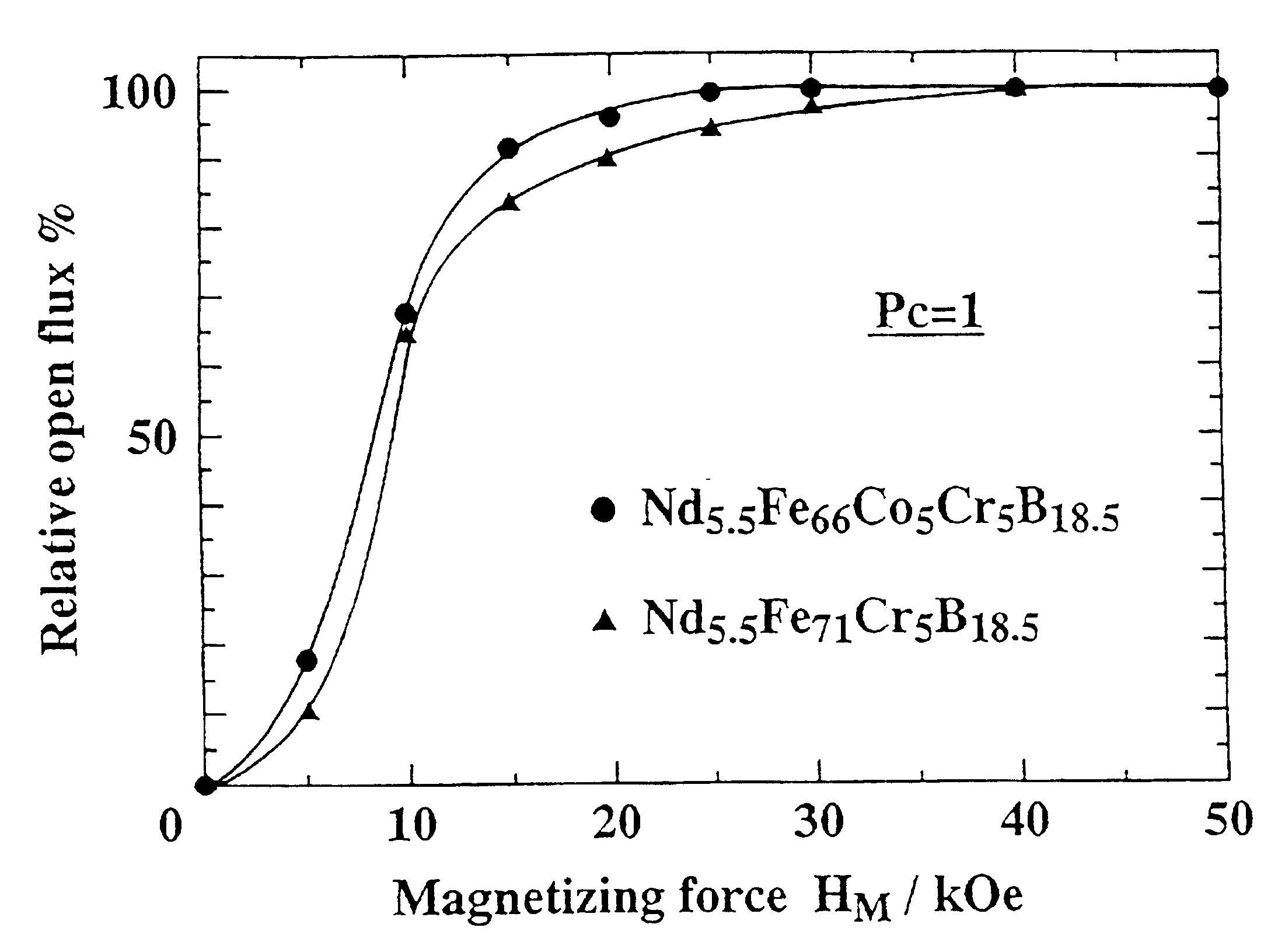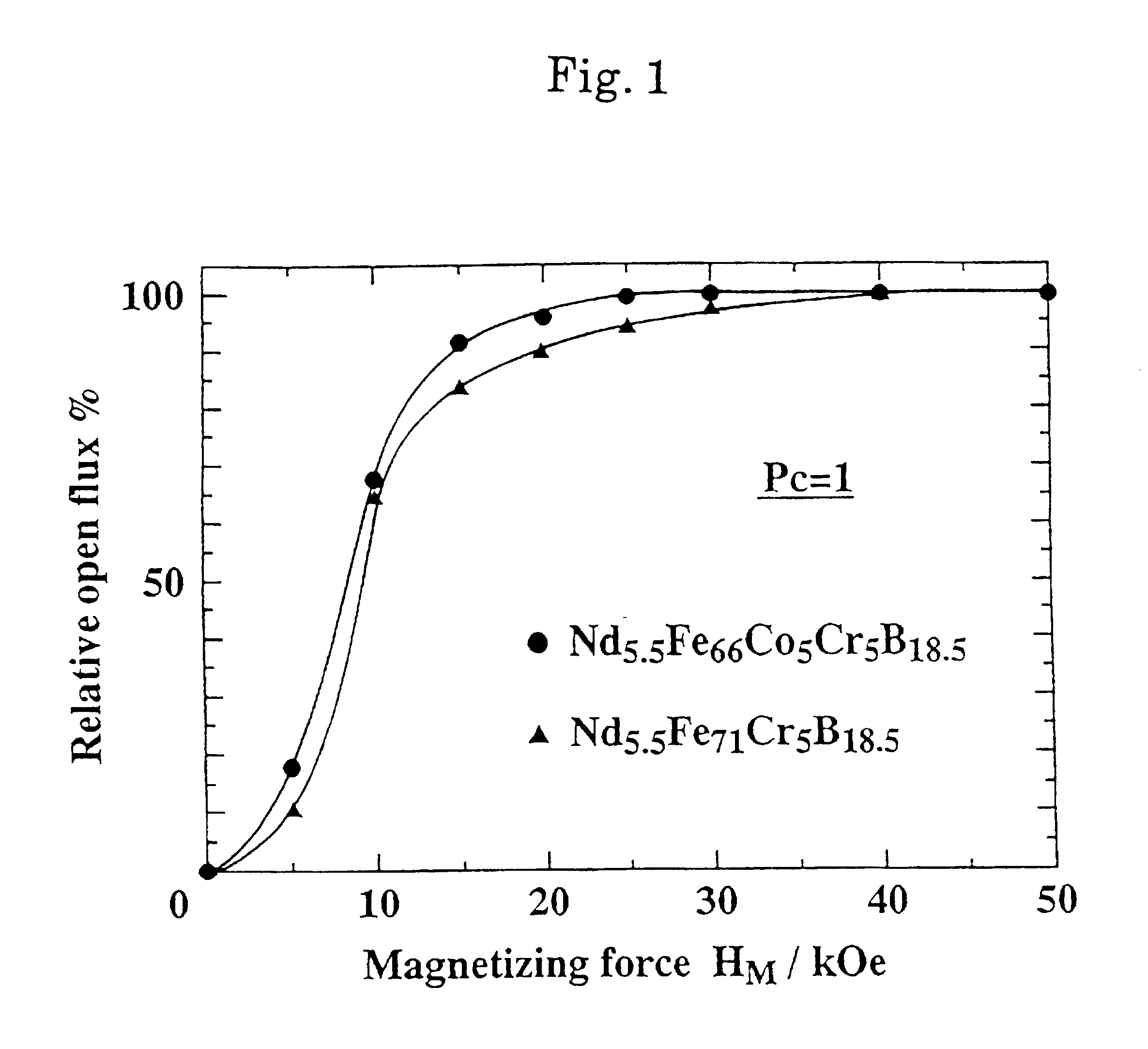Iron-based permanent magnets and their fabrication as well as iron-based permanent magnet alloy powders for permanent bonded magnets and iron-based bonded magnets
a technology of permanent magnets and alloy powders, which is applied in the direction of magnetic materials, nanomagnetism, and magnetic bodies, can solve the problems of lowering mechanical strength, limiting the use of permanent magnets in power motors and actuators in home electronic goods and general electric goods, and ease of defect formation
- Summary
- Abstract
- Description
- Claims
- Application Information
AI Technical Summary
Benefits of technology
Problems solved by technology
Method used
Image
Examples
actual example 2
On measuring the Curie temperature with a thermomagnetic balance of sample No 3, which has the magnetic characteristics listed in Table 2, we found the presence of a main ferromagnetic phase having a Curie temperature of 849.degree. C. and another ferromagnetic phase having a Curie temperature of 388.degree. C. After comparing x-ray analyses, the former is thought to be .alpha.-Fe in a solid solution with Co, and the latter a Nd.sub.2 Fe.sub.14 B-type compound (with Fe partially replaced by Co).
actual example 3
After processing bonded magnet No. 3, which has the magnetic characteristics listed in Table 3, so that the permeance coefficient becomes 1, the magnetization curve, shown in FIG. 1, has been found by pulse magnetizing from a weak magnetic field in the range 2 kOe.about.50 kOe and each time measuring the residual magnetic flux density of the magnet in the open magnetic configuration. By taking the magnetization rate for the residual magnetic flux density at 50 kOe as 100%, the curve is found by estimating the magnetization rate for each magnetization field as a relative ratio of the residual magnetic flux density. The magnetic field required for 90% magnetization is about 13 kOe.
PUM
| Property | Measurement | Unit |
|---|---|---|
| particle sizes | aaaaa | aaaaa |
| particle sizes | aaaaa | aaaaa |
| particle size | aaaaa | aaaaa |
Abstract
Description
Claims
Application Information
 Login to View More
Login to View More - R&D
- Intellectual Property
- Life Sciences
- Materials
- Tech Scout
- Unparalleled Data Quality
- Higher Quality Content
- 60% Fewer Hallucinations
Browse by: Latest US Patents, China's latest patents, Technical Efficacy Thesaurus, Application Domain, Technology Topic, Popular Technical Reports.
© 2025 PatSnap. All rights reserved.Legal|Privacy policy|Modern Slavery Act Transparency Statement|Sitemap|About US| Contact US: help@patsnap.com


